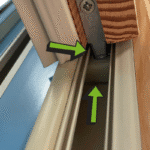When it comes to choosing materials for your next project, the decision between Masonite and plywood can feel like a maze. You’re standing in the hardware store, faced with these two contenders, and each promises durability and style.
But which one truly fits your needs? Imagine the confidence you’ll feel once you know the strengths and weaknesses of each material. You’ll make an informed decision that not only enhances your project but also saves you time and money.
Dive into this article as we unravel the mystery of Masonite vs. Plywood, giving you the insights you need to make the best choice for your home or business. Your perfect project outcome is just a read away.
Material Composition
Understanding the material composition of Masonite and Plywood can aid in making informed decisions. Both materials serve specific purposes in construction and furniture making. Their unique structures and benefits set them apart.
Masonite Structure
Masonite is a type of hardboard. It’s made from wood fibers. The fibers are steam-cooked and pressure-molded into sheets. This process gives Masonite its dense structure. It is smooth on one side and textured on the other. This dual texture allows for versatile usage. The smooth side offers a sleek finish. The textured side provides grip for adhesives.
Plywood Layers
Plywood is made from thin layers of wood veneer. These layers are glued together with adjacent layers having their wood grain rotated. Typically, the grain is rotated up to 90 degrees. This cross-graining technique increases stability. It reduces the risk of splitting when nailed at the edges. The number of layers can vary. More layers often mean a stronger board. Plywood’s layered structure offers flexibility and strength. It’s a popular choice for building and carpentry projects.

Credit: www.cabinetcity.net
Durability And Strength
Choosing the right material involves understanding its durability and strength. Masonite and plywood offer distinct characteristics. These can affect their performance in various applications. Assessing factors like impact resistance and moisture resistance is crucial. This helps determine which material suits your needs best.
Impact Resistance
Masonite exhibits impressive impact resistance. Its dense composition absorbs shocks effectively. This makes it suitable for areas prone to heavy use. Plywood, with its layered construction, also offers good impact resistance. The layers provide stability and strength. For outdoor projects, consider plywood’s rugged nature.
Moisture Resistance
Masonite excels in moisture resistance due to its manufacturing process. The material resists water and dampness. This feature makes Masonite ideal for indoor settings. Plywood, on the other hand, requires treatment for moisture resistance. Proper sealing extends its lifespan in humid environments. Choose plywood for applications needing extra protection.
Applications And Uses
Choosing the right material for your project can be challenging. Masonite and plywood are versatile options with distinct applications. Understanding their uses will help you make informed choices.
Masonite In Home Projects
Masonite is often used for interior design projects. It’s great for creating smooth surfaces. You can paint it easily for a clean look. Many people use it for making furniture. It’s also perfect for shelving and cabinetry. Masonite is lightweight, making it easy to handle. This material is also used in wall paneling. It adds a modern touch to homes. Artists sometimes use Masonite for painting surfaces. It’s reliable and cost-effective.
Plywood In Construction
Plywood is a staple in construction. It provides strong support for structures. Builders use it for flooring and roofing. Plywood is resistant to damage. This makes it suitable for outdoor projects. It’s also used in making concrete forms. Plywood comes in different grades. You can choose one based on your needs. It’s an affordable option for large projects. Plywood is versatile in building furniture too. Its strength makes it durable for heavy-duty use.

Credit: www.homedepot.com
Aesthetic Appeal
Masonite and plywood both offer unique visual qualities. Choosing between them can impact the look of your space. Each material has distinct surface characteristics and color options. These features can shape the style of your projects.
Surface Finish
Masonite often presents a smooth surface. This makes it ideal for painting or artistic designs. Its uniform texture adds elegance to walls and furniture. Plywood, on the other hand, may have visible grain patterns. These patterns add natural charm to interiors. Plywood’s surface can vary, from rough to polished.
Color Options
Masonite typically comes in neutral tones. It blends well with diverse color schemes. This simplicity allows for versatile decor possibilities. Plywood offers more variety in shades. Different wood types influence its colors. From light birch to dark walnut, plywood provides rich choices. These options suit various design preferences.
Environmental Impact
Masonite uses less wood and energy, making it more eco-friendly. Plywood production involves more resources, impacting forests significantly. Choosing Masonite can help reduce deforestation.
When considering the environmental impact of building materials like Masonite and plywood, it’s essential to look beyond just their functionality. Both materials have unique environmental footprints that can influence your decision. Whether you’re building a new home or crafting a piece of furniture, understanding their sustainability and recyclability can guide you towards more eco-friendly choices.Sustainability
Masonite is known for its sustainability. Made from wood fibers, it utilizes what’s often considered waste in the lumber industry. This reduces the demand for fresh timber and helps manage forest resources more effectively. Plywood, on the other hand, is typically made from thin layers of wood veneer glued together. Though it uses wood, the process can be resource-intensive. Consider the energy and chemicals used in the production; these factors can have a significant environmental toll. Have you ever thought about how your choice of building material could impact forests? When you choose materials like Masonite, you might be contributing to more sustainable forestry practices.Recyclability
When it comes to recyclability, Masonite shines. It’s often easier to break down and recycle compared to plywood. The wood fibers in Masonite can be repurposed for various applications, reducing waste. Plywood poses more challenges in recycling. The adhesives used in its layers can complicate the recycling process. This means that discarded plywood often ends up in landfills, which isn’t ideal for the environment. Think about the end of your project’s life cycle. Will the materials you choose have a second life, or will they contribute to growing landfill problems? In your next project, consider how the environmental impact of your materials aligns with your values. Making informed choices not only benefits you but also contributes to a healthier planet.Cost Considerations
Comparing Masonite and Plywood, Masonite typically costs less, making it a budget-friendly option. Plywood offers durability but comes at a higher price. Consider your project needs to decide which material suits your budget best.
When you’re deciding between Masonite and plywood for your project, cost considerations often play a significant role. Understanding the price differences and long-term value of each material can help you make an informed choice. Whether you’re on a tight budget or looking for something that will last, considering both immediate and future costs is crucial. Let’s break down the cost aspects to give you a clearer picture.Price Comparison
Masonite tends to be more budget-friendly. It’s typically cheaper per sheet compared to plywood, making it an attractive option for those trying to minimize initial expenses. Plywood, on the other hand, can be more expensive upfront. The cost varies depending on the type and quality of the plywood, with options ranging from basic to premium grades. Think about how this affects your budget. If you’re working on a large-scale project, choosing Masonite might help you save a substantial amount. But if you’re looking for durability, the higher cost of plywood might be justified.Long-term Value
While Masonite is cheaper initially, you may face replacement costs sooner. It’s generally less durable, particularly in moist environments, where it tends to warp or swell. So, if longevity is a priority, this is something to keep in mind. Plywood, known for its strength and resistance to moisture, could offer better long-term value. You might pay more upfront, but its durability often means fewer replacements over time. Have you ever replaced a material sooner than expected? It can be frustrating and costly. Investing a bit more in plywood might save you from this headache. Consider your project’s specific needs. If you need something temporary, Masonite might suffice. But for long-lasting projects, plywood’s durability may prove to be more cost-effective in the long run. When thinking about costs, it’s not just about the initial price tag. What are you willing to invest for peace of mind and fewer replacements?Ease Of Installation
Masonite panels offer straightforward installation with lightweight design and smooth surfaces. Plywood requires careful handling due to heavier weight and textured finish. Both materials require basic tools, but Masonite simplifies the process for beginners.
Ease of Installation When choosing between Masonite and plywood, the ease of installation can significantly influence your decision. Both materials offer unique installation experiences, which can impact the time and effort you invest in your project. Understanding the tools required and time investment can help you decide which material suits your needs better.Tools Required
With Masonite, you often need basic tools like a saw, hammer, and nails. Its flexibility makes cutting and shaping straightforward, which can be a relief if you’re not a seasoned DIYer. Plywood, on the other hand, might demand a bit more muscle. You might need a power saw for cutting through its tougher layers. If you’re a beginner, think about your tool kit. Are you prepared to handle the demands of plywood?Time Investment
Masonite tends to go up quickly. Its lightweight nature and ease of handling mean you can move through your installation project faster. If time is of the essence, Masonite might be your best bet. Plywood, while durable, might require more of your hours. Its sturdiness is an advantage, but it might slow you down. Do you have the patience and time to work with a material that might take longer to install? Choosing between Masonite and plywood for your project can be a matter of balancing your available tools and time. By considering these factors, you can make a more informed decision that aligns with your capabilities and schedule.
Credit: www.woodworkersjournal.com
Frequently Asked Questions
What Is The Main Difference Between Masonite And Plywood?
Masonite is denser and smoother. Plywood has layers and is more flexible.
Is Masonite More Durable Than Plywood?
Masonite resists water and wear better. Plywood is strong but can warp.
Which Is Better For Outdoor Use, Masonite Or Plywood?
Plywood is better for outdoors. Masonite can absorb moisture and swell.
Can Masonite Be Used For Flooring?
Yes, Masonite is smooth and suitable for flooring. It offers a polished look.
Is Plywood Easier To Work With Than Masonite?
Plywood cuts easily and holds screws well. Masonite is harder to cut and drill.
Conclusion
Choosing between Masonite and plywood depends on your specific needs. Masonite offers smooth surfaces ideal for painting projects. Plywood is versatile and strong, suitable for construction. Consider durability and application. Budget plays a role too. Think about the environment where you’ll use the material.
Plywood may withstand moisture better. Masonite might be cheaper for small projects. Both have unique benefits. Evaluate your requirements carefully. Make an informed decision based on project goals. Each material has its place in home improvement. Your choice impacts project success.
Choose wisely, and your project will shine.




